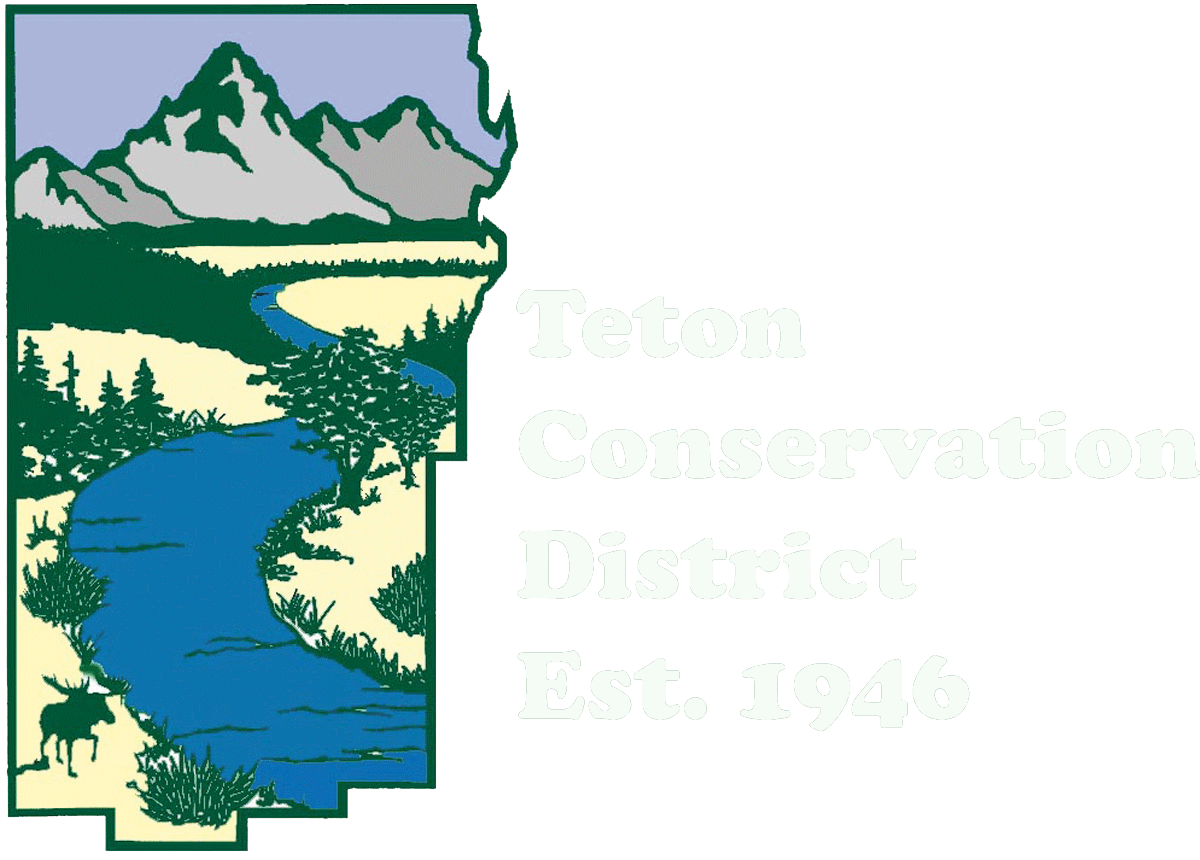By David Lee, Water Resources Specialist
Though we might not be out boating or watering the garden, we are all connected to the watershed in the winter. Arguably more connected—winter snowfall is what fills the streams and rivers in our watershed in the spring and summer.
Teton Conservation District staff tracks and shares snowpack and water supply metrics to help the community stay connected to our watershed. Tracking this data also helps water managers, recreationists, and others predict river flows and drought conditions. To sign up for regular watershed updates, email david@tetonconservation.org.
With the early part of the snowpack-building season underway, here are some metrics to understand and keep an eye on as winter progresses.
Where is our watershed?
Teton Conservation District monitors snowpack in the Snake River Headwaters, a watershed that includes all of the Upper Snake River watershed to below Palisades Dam, as well as the Hoback, Greys, and Salt River basins. See the watershed map below.
The Snake River Headwaters (HUC 170401). Click the image to expand.
Snow Water Equivalent
A major element of the water supply picture is snow water equivalent (SWE), or the amount of liquid water in the snowpack. As of January 10, 2023, our snow water equivalent in the Snake River Headwaters is measured at 120% of normal.
We recently revamped the snowpack page on our website with a SWE plot that is updated weekdays so you can easily track how our snowpack is shaping up throughout the season.
The SWE measurement in mid-April, our typical peak snowpack date, is typically the strongest predictor we have of the amount of water that can run off into streams and rivers. Last year, our peak snowpack occurred on April 24th, with 17.0 inches of snow water equivalent, which was 91% of normal. That means we missed out on almost two inches of water from our snowpack last year, compared to a normal year.
Snow Water Equivalent in the Snake River Headwaters. Click the image to expand.
Streamflows
As expected, a below-average snowpack last year resulted in below average natural stream flows overall. But, despite low flows in the spring and late summer, the timing and volume of peak runoff last summer were near normal. Cold temperatures in the spring kept the snowpack up in the mountains for longer, but when it finally warmed up, it warmed up quickly. Late season stream flows would have been lower, if not for the cold spring and record-breaking August rainfall.
Streamflows in the Snake River and its tributaries, 2022. Click on image to expand.
Water Storage Capacity
A healthy snowpack this winter could improve the water supply substantially. However, it will take multiple above-average snow years to completely refill Jackson Lake. Perhaps the best visual representation of the complex water storage system in the Upper Snake River is the Bureau of Reclamation’s “teacup” diagram, which shows the capacity and storage levels of major reservoirs within the watershed and the stream flow between those reservoirs. As of January 10, 2023, Jackson Lake is currently at 20% full, or 171,214/847,000 acre-feet, and Palisades reservoir is 22% full, or 262,190/1,200,000 acre-feet.
Jackson Lake’s average peak capacity is 700,000 acre-feet (83% full). Last year, Jackson Lake filled to just over 400,000 acre-feet (47% full), from a minimum of 127,000 acre-feet (15% full) in October of 2021. This year, Jackson Lake bottomed out at 140,000 acre-feet (16% full) in October 2022.
Some of the smaller reservoirs in the Upper Snake River system may be relatively full, but the large reservoirs are not. An overall water deficit in the system and previous years of drought means that water managers will be watching how our snowpack develops to make the best possible decisions on reservoir outflows next irrigation season.
“Teacup” Diagram of streamflows and reservoir storage in the Upper Snake River, provided by the Bureau of Reclamation. Click the image to expand.
Seasonal Forecasts
It is refreshing to see an above-average start to winter here in the Snake River Headwaters. Skiing has been excellent, and it puts us in a better position to not rely on end-of-season storms to bring us to normal water supply. However, a lot can change in several months, so we will be keeping an eye on the long-term forecast as winter continues. We are expected to see near equal chances for above and below average temperatures and a possible lean towards above-average precipitation for the rest of the winter. Until then, have a happy winter, and don’t hesitate to reach out and discuss water supply in the Upper Snake River Watershed!
3-month seasonal outlook, provided by the National Oceanic and Atmospheric Administration (NOAA). Click the images to expand.

